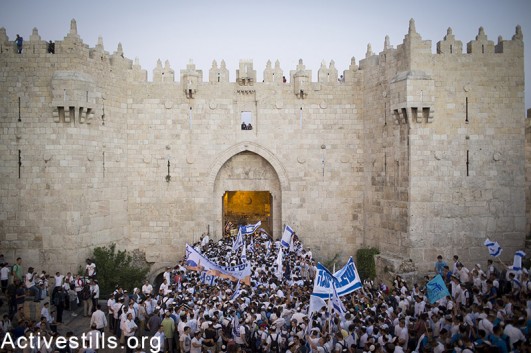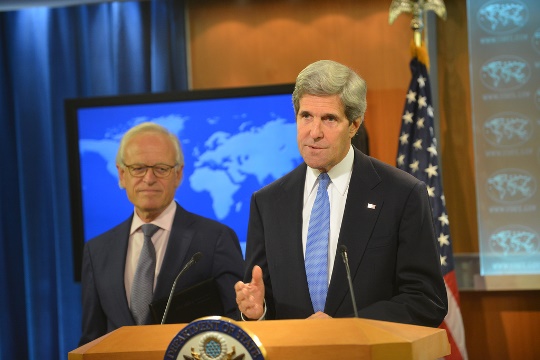The debate over whether we are living in a single state is irrelevant – the answer is a resounding yes. The real problem is that freedom and equality are only extended to some of its subjects.

“You’ve just crossed the Green Line.” I say it every time I take a friend or a group from abroad to visit Jerusalem, as we turned left from Jaffa Street down toward Damascus Gate in the Old City. Many of them do a double take, looking around for a sign or marker indicating the line’s existence – but there are none. The roads intersect, the light rail train passes by, and pedestrians walk across the street as usual.
I always raise this fact with visitors not to emphasize the importance of the Green Line, but rather to show them how insignificant it really is. Decades ago, this “armistice” line separated the hostile armies of Israel and the neighboring Arab countries. Today it is supposed to demarcate the border of a Palestinian state. But the Green Line is nowhere to be found in East Jerusalem, nor in any other part of the occupied territories. Settlements, highways, national parks, and the separation wall have completely erased it from the land’s geography.
The only places one can find the Green Line are on some foreign maps (not Israeli- or Palestinian-made maps), and in the minds of policymakers and observers who believe that the two-state solution is still possible. But even that seems to be changing. Barak Ravid recently reported in Haaretz that senior officials at the White House are beginning to publicly speak about the situation in the West Bank as a one-state reality, with almost “no chance of reaching an Israeli-Palestinian peace agreement.” This news comes a few weeks after U.S. Secretary of State John Kerry remarked that the violence of the past month “offers a glimpse” into the reality of two peoples being forced to live with each other.

The White House would predictably disavow these comments with statements reiterating its commitment to establishing two states and renewing peace talks. It shouldn’t. For years, the international community has glued itself to the notion that a two-state solution is still within its grasp, albeit slipping away due to Israel’s expansion into the West Bank. Their assumption is that the occupied territories have not yet been completely absorbed by Israel, and therefore there is still a possibility of “reversing” the process and returning to the pre-1967 borders with some adjustments.
This longstanding view, however, has ignored the passing of time and insulated itself from the facts on the ground. The reality is that the Israeli and Palestinian generations of the past 50 years have only ever lived in one state. With Israeli citizenship or Jewish identity, a person can travel from the Jordan River to the Mediterranean Sea, live on most parts of the land, and receive the support and security of the state. But with Palestinian residency, a person’s movement is heavily restricted, their place of living is designated in specific areas, and the state’s security apparatus is constantly directed against them. The supreme powers presiding over this vast system lie with the Jewish-Israeli political and military authorities sitting in Jerusalem and Tel Aviv — not in Ramallah or Gaza.
The debate over whether we are in a single state is therefore irrelevant – the answer is a resounding yes. The real problem is that all its subjects have very different and separate experiences living under this state. Palestinians in the territories live in a cage that is forcibly imposed upon them. Israelis live in a bubble that they have deliberately imposed on themselves. Only one group on the land – the 1.4 million Palestinian citizens of Israel – is immersed in both societies, caught between their relative privilege vis-à-vis Palestinians under occupation on one side, and systemic discrimination from Israelis on the other.
The sources of the conflict derive from these competing experiences: of democracy versus occupation, privilege versus discrimination, freedom versus oppression. It is why Israelis are always perplexed when violence is directed at them from the West Bank or Gaza, and why Palestinians are desperate enough to protest in the streets even if their lives are at risk. The U.S. and the international community should start accepting and acting on this paradigm, rather than drag efforts like the peace process into further obsoleteness. If we want to create two states, let us speak about it as secession. If we want to keep one state, let us speak about achieving equality. Don’t trap us in limbo because some people believe we might be living under the same state – we already are.




